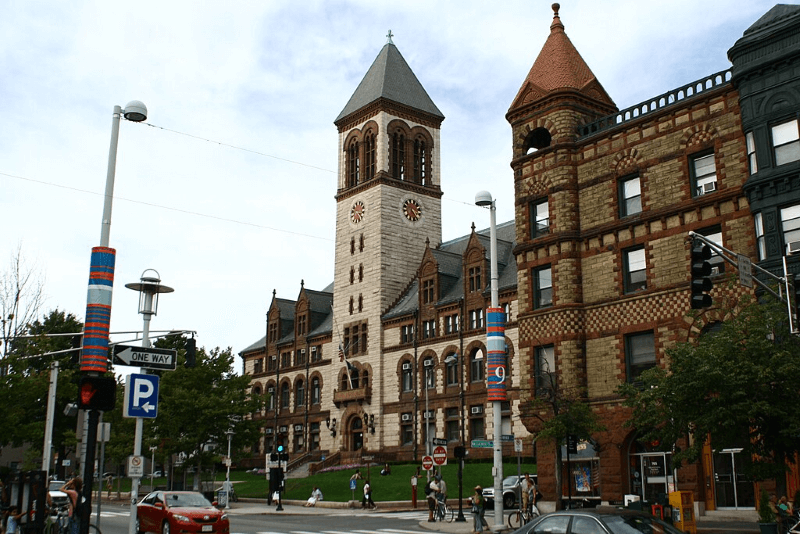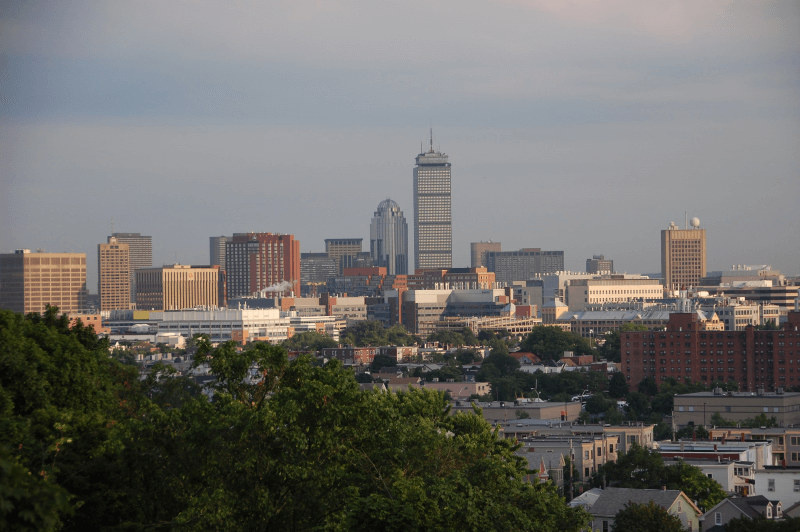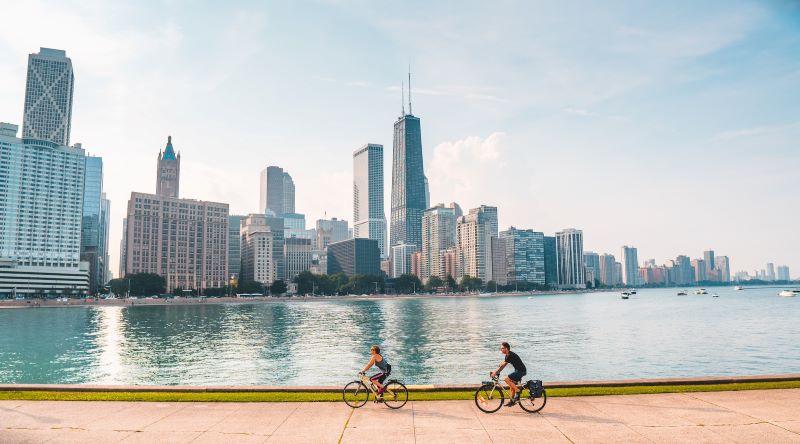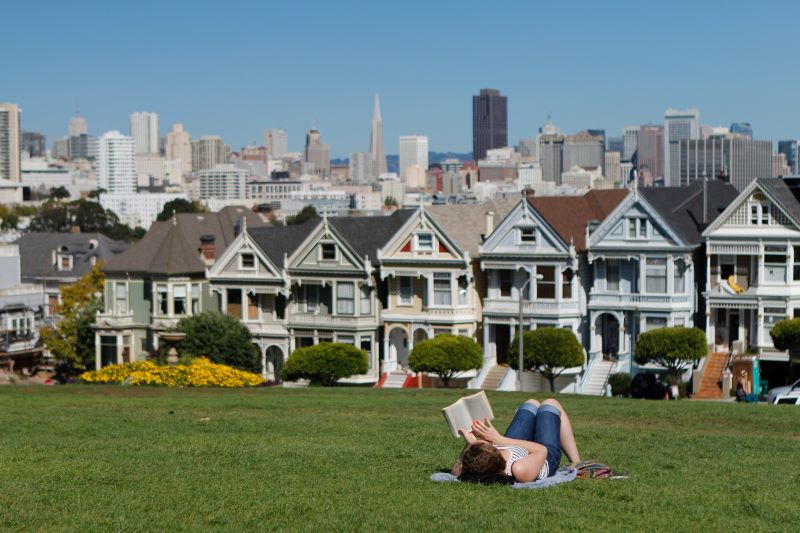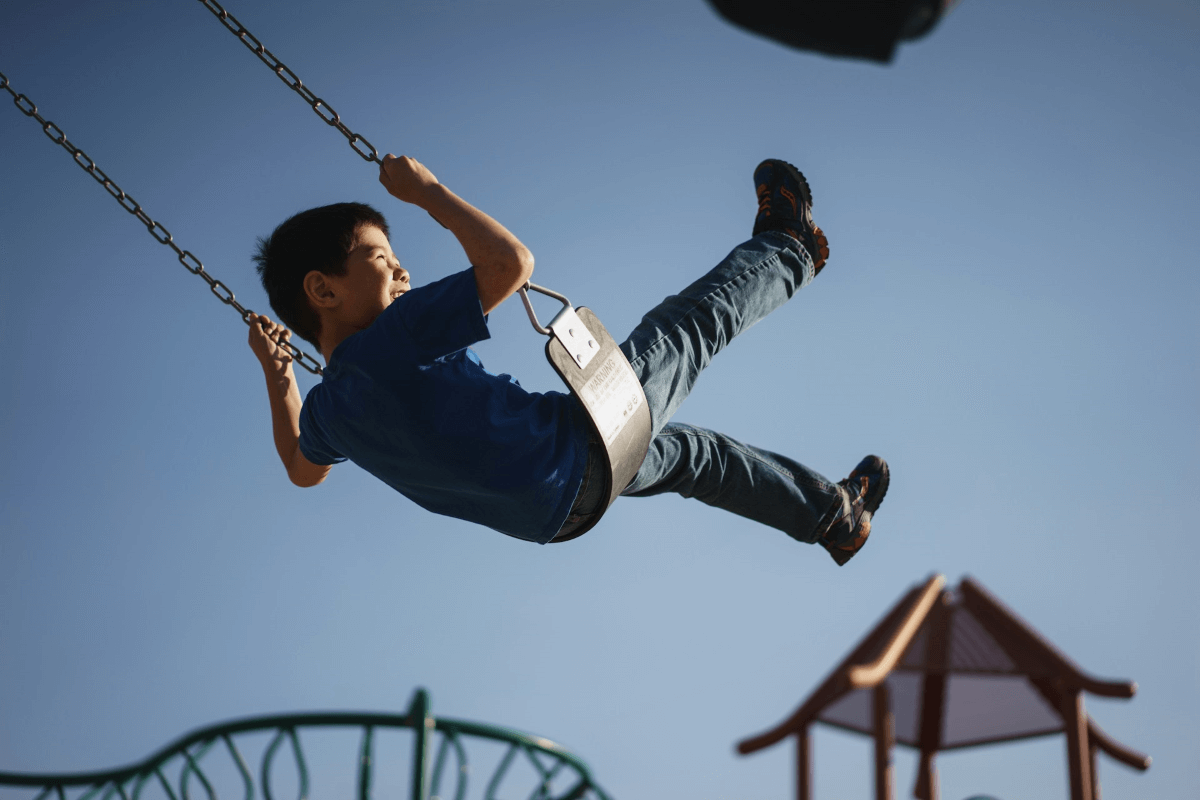
*Due to inaccuracies in the Virginia State Police’s sex offender registry, the data used in our study related to sex offenders in Virginia may be incorrect. We will update our findings as soon as accurate information is available.
Which cities offer the best spots to take the kids for a fun day on the playground?
To mark National Playground Safety Week starting April 22, LawnStarter ranked 2024’s Best Cities for Children’s Playgrounds.
We compared over 430 of the biggest U.S. cities based on three categories. We considered the number of playgrounds, average visitor ratings, and local crime rate, among 7 total metrics.
Swing through our ranking below. To learn how we ranked the cities, see our methodology.
Contents
- City Rankings
- Top 5 Close Up
- Key Insights
- Ask the Experts
- Behind the Ranking
- Final Thoughts: Turn Your Backyard Into a Playground
City Rankings
See how each city fared in our ranking:
Top 5 Close Up
Check out the slideshow below for highlights on each of our top 5 cities.
Key Insights
Big cities such as New York (No. 1), Chicago (No. 4), and San Francisco (No. 5) landed at the top with the best access to playgrounds. These cities also boast some of the highest Walk Scores, making it easy for children and their caregivers to get to the playground.
Two states stood out in our ranking: California boasts 34 cities in the top 100, and nearly all Massachusetts cities in our ranking finished in the top 100, except for Brockton (No. 342) and Springfield (No. 350), where playgrounds have low visitor ratings.
Less populous suburbs like New Rochelle, New York (No. 6), Waukegan, Illinois (No. 8), and Johns Creek, Georgia (No. 24) have fewer playgrounds to choose from when compared with NYC, Chicago, and Atlanta (No. 220). However, they scored near the top thanks to their high playground ratings and safe communities.
*Richmond, Virginia (No. 427), finished near the bottom of our ranking not from an absence of playgrounds — the city claims 58 — but due to a lack of safety. Richmond has the highest rate of sex offenders out of the cities in our ranking with 295 registered offenders per 10,000 residents at the time of writing. Flint, Michigan (No. 422), has the next-highest rate of sex offenders, with 121 per 10,000 residents.
Ask The Experts
Over 200,000 children end up in the emergency room as a result of playground injuries each year.
We turned to a panel of childcare experts for their best playground safety tips. Stay prepared and explore their insights below.
- What are 3 essential tips for parents and caregivers who are supervising kids at the playground?
- Which part of the playground is most dangerous and why?
- What should parents do if an unsupervised kid is causing trouble at the playground?
- What are 3 ways playgrounds can be more inclusive of children with disabilities?
- How can local governments improve playground access and design for their communities?
- What is one cutting-edge innovation in playground design?
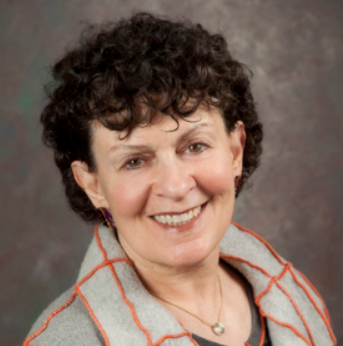



What are three essential tips for parents and caregivers who are supervising kids at the playground?
Put away the cell phones.
Which part of the playground is most dangerous and why?
This takes actual data. Some organizations must be studying where the most injuries occur. I would think swings, but this is just a hypothesis.
What should parents do if an unsupervised kid is causing trouble at the playground?
Try to speak to the child kindly.
What are three ways playgrounds can be more inclusive of children with disabilities?
Have devices that can be done just with arms or just with legs.
How can local governments improve playground access and design for their communities?
Invest in Playful Learning Landscapes to make their playgrounds contain learning as well.
What is one cutting-edge innovation in playground design?
Once again, go to Playful Learning Landscapes.
Other links:

How can local governments improve playground access and design for their communities?
The Playful Learning Landscapes work in Santa Ana has involved a deep partnership with the city. Representatives from Parks and Recreation and Public Works have been involved in the project throughout offering key insights into making the projects successful.
Although this work was funded by a grant from the National Science Foundation the City of Santa Ana agreed to own and maintain the installations. The goal is that these installations would serve as a proof of concept and the city would then be able to replicate them using their existing budgets. Indeed we are already seeing examples of this — the city has funded an abacus playful learning design for a bus stop, and several other designs for a new playground project.
Santa Ana is also part of a global network of playful learning cities convened by Playful Learning Landscapes Action Network to share lessons learned and build community around transforming our everyday spaces into hubs for playful learning.
What is one cutting-edge innovation in playground design?
I am part of an initiative called Playful Learning Landscapes where we design everyday spaces (e.g., parks, playgrounds, and bus stops) for play and learning opportunities. We design these spaces based on research from developmental and education sciences and in partnership with a local community organization — the Santa Ana Early Learning Initiative (SAELI) — so that they reflect their culture, values, and community.
For example, in Santa Ana California — a predominately Latino community — we designed a giant version of the popular game Loteria, a bingo-style game that many families in Santa Ana play. Within the game, we embedded math and science learning activities merging physical activity, joyful cultural games, and early STEM learning.

What are three essential tips for parents and caregivers who are supervising kids at the playground?
1. As an early childhood educator, and mother of three, my best advice for parents taking their children to the playground is to come prepared. Both children and grownups should dress for the weather.
If it’s cold outside, make sure you dress your child in layers and bring gloves to ensure your playtime isn’t cut short. During the warmer months, don’t forget the sunscreen and water bottles. Other supplies like bandaids, snacks, and a blanket to sit on can also come in handy.
2. Another tip is to find out what the bathroom situation is and plan accordingly. Many playgrounds are connected to elementary schools which means if nature calls, you are out of luck!
While some playgrounds do have bathrooms, it’s always a good idea for everyone to use the bathroom before leaving the house. And remember to bring extra diapers and baby wipes for children who are not potty-trained.
3. One final tip is to supervise your kids, but let them play! There is a growing recognition of the importance of risky play in child development. Playgrounds provide children with countless opportunities for gross motor development. They are also a place to foster important skills like risk analysis, self-confidence, resiliency, and flexible thinking.
Rather than telling your child “You can’t climb on that,” stand by and ask questions like “What’s your plan?” Try narrating their moves and offering suggestions to help them feel confident and supported. Stay close enough to soften a potential fall, but resist the urge to step in and help them physically unless they ask for it explicitly. Instead, offer reassurance and encouragement: “I’m here if you need me, but you are strong and brave. You’ve got this!”
Which part of the playground is most dangerous and why?
While playgrounds are designed with safety in mind, accidents do happen.
The majority of injuries that occur on playgrounds result from falls, be it from swings, slides, rock walls, monkey bars, or the structure itself. Playground surfacing is designed to absorb the shock from a fall, but injuries such as broken bones can still occur.
- Before arriving at the playground, you and your child can discuss the importance of using playground equipment safely.
- Make sure that your child is playing on equipment made specifically for their age and body size.
- Avoid playgrounds with asphalt or concrete flooring as these do not provide cushion or protection against falls.
- While it might seem like a no-brainer, sneakers are the safest type of footwear for the playground as they provide support and traction, protect against infections, and won’t slip off while your child is playing.
What should parents do if an unsupervised kid is causing trouble at the playground?
How to handle the issue of an unsupervised child causing trouble on the playground depends on many factors, ranging from the age of the child to the comfort level of the parent.
Your first step might be to move a little closer to see if the situation is helped by the presence of an adult.
If that strategy doesn’t work, your safest bet is to redirect your child to another area of the playground.
If you are comfortable talking to children in an age-appropriate manner, you might try gently reminding the individual in question of the playground rules, but it is not your responsibility to discipline someone else’s child.
My advice would be to only intervene if the child is posing a serious safety risk to others on the playground.
What are three ways playgrounds can be more inclusive of children with disabilities?
Playgrounds should be a place where everyone feels welcome. Inclusive playgrounds meet the needs of all users, including individuals with physical and/or cognitive challenges. There are many ways that playgrounds can be more inclusive of children with disabilities.
1. Adding sensory elements such as music panels, roller slides, and wheelchair-accessible spinners ensure that all children are getting the sensory input that is so beneficial to their development.
2. Another way to make playgrounds more inclusive is to incorporate equipment designed to help children with disabilities play alongside their typically developing peers. Adaptive equipment such as swings, ramps, and wheelchair-accessible slides allow children with a wide range of abilities to play and thrive.
3. Additionally, while playgrounds are a great place for kids to be loud and active, individuals with sensory issues can become overstimulated and dysregulated. Providing quiet spaces for children to calm their bodies and minds can help ensure everyone feels safe on the playground.
How can local governments improve playground access and design for their communities?
Research has shown that parks and playgrounds can provide enormous health benefits to communities, strengthen social ties, and improve environmental outcomes. Unfortunately, issues like lack of funding, housing barriers, zoning restrictions, and lack of access to public transportation often exclude people of color and lower-income families from utilizing high-quality playgrounds and green spaces.
Local governments can improve playground access and design by first conducting extensive community outreach to better understand the needs of the community and how residents will use the space. In-person or virtual public meetings are a simple way to connect with community members and gather this vital information.
In terms of securing funding, state and federal infrastructure grants are one way to receive funding to improve public spaces like playgrounds to make them safer and more accessible.
What is one cutting-edge innovation in playground design?
One cutting-edge innovation that has seen a rise in popularity throughout the past few years is the use of sustainable materials and eco-friendly practices to construct modern playgrounds.
Traditional playgrounds often use materials like plastic, which are harmful to the environment and have a limited lifespan. Sustainable playgrounds prioritize the use of materials like steel, recycled plastics, and reclaimed wood which reduce environmental impact while being safe and durable.
Behind the Ranking
First, we determined the factors (metrics) that are most relevant to rank the Best Cities for Children’s Playgrounds. We then assigned a weight to each factor based on its importance and grouped those factors into 3 categories: Access, Quality, and Safety. The categories, factors, and their weights are listed in the table below.
For each of the 500 biggest U.S. cities, we then gathered data on each factor from the sources listed below the table. We eliminated 69 cities lacking sufficient data in a single category, resulting in a final sample size of 431 cities.
Finally, we calculated scores (out of 100 points) for each city to determine its rank in each factor, each category, and overall. A city’s Overall Score is the average of its scores across all factors and categories. The highest Overall Score ranked “Best” (No. 1) and the lowest “Worst” (No. 431).
Notes:
- The “Worst” among individual factors may not be No. 431 due to ties.
- The “Number of Playgrounds” may not encompass all playgrounds available at schools, churches, private properties, or in gated communities.
Sources: City-Data.com, NeighborhoodScout, The Trust for Public Land, Walk Score, and Yelp
Final Thoughts: Turn Your Backyard Into a Playground
Experts say kids older than 6 should get 60 minutes of physical activity daily, but only 24% of children between the ages of 6 and 17 achieve that daily hour.
Reports show that exercise can help kids improve sleep quality, school performance, and emotional well-being.
It’s possible to turn a yard — big or small — into a safe environment for children to play. Get the kids active outdoors with help from our tips below.
- Invest in a couple of fun yard games for kids.
- Have the youngsters help out with the gardening this summer.
- Have your kiddos play with their furry best friend in a dog-friendly landscape.
- Fill the lawn with a durable grass type that can endure plenty of running and playing.
- Design your own backyard playground with a tire swing or treehouse.
- Keep your turf neatly mowed and pest-free.
Hire a local LawnStarter pro to handle all of your lawn care and landscaping tasks while you make memories with your children at the playground.
Media Resources
Main Photo Credit: Myles Tan / Unsplash / Unsplash License

